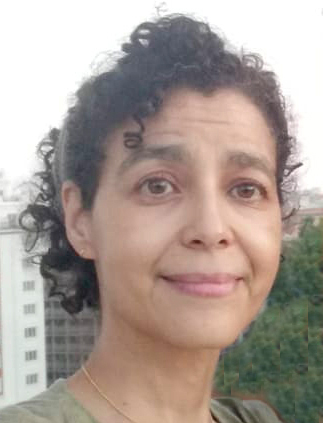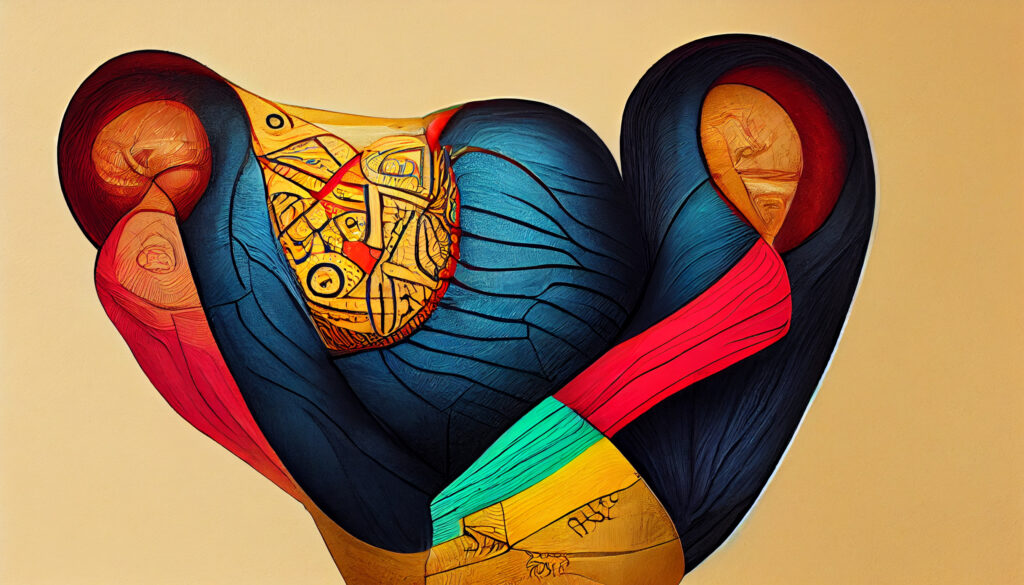Paloma Etienne from Conciencia Afro is sharing her own experience of two family members’ loss through telling what caregiving means to brown skin people as an African video creator on her first installation of the series of six called ASHÉ. Conciencia Afro was one of the host organisations for the Decolonizing The Newsroom event that is part of the Re:framing Migrants in European Media project.

ASHÉ is entitled “love in our memory” because I wanted to talk about caregiving and the memories that assailed me after both my father and brother passed away. When my father died, the main reference of my blackness left, and I felt lost. I wanted to talk about why I miss them so much. I needed to express how it felt to take care of them, the importance of hydrating their brown skin when we put cream over their bodies, and express the force that propelled us to do everything possible to make them comfortable in their sickness in the hospital. Blackness is something that hurts so much sometimes. When I see the images of Black Lives Matter, or Black, Indigenous and people of colour (BIPOC), diverse people being harassed or hurt, it feels like my own skin is ripping apart, my heart skips a beat. I notice this family-like warm feeling when I’m dealing with BIPOC people, when I see laughter and pain, both really stir emotions in me.

ASHÉ is the first piece in a series of six that will form a video installation on caregiving, blackness, and vulnerability. Dealing with vulnerability is like having a secret in our hands that is very fragile, and we don’t know how to deal with it sometimes.

The perfect place to watch ASHÉ is a room where you can see each piece again, if you wish, which is what people tell me when they see it, that they would like to see it again. It must be a place that allows you to meditate, where you can sit on a pouffe and see the pieces of the installation and have space to deal with the emotions evoked within you. I say many things in the short time that each piece lasts, because I wrote a lot during the time that I was taking care of my father and my brother, and that is why the piece is mixed, it is nourished by images and writing.
Each piece is related to one of the essential elements: earth, water, wind, metal, and fire. The emotions you feel in a hospital or in that close intimacy with another person who depends on your care are very basic, very clear, and that is why I wanted to look at them. ASHÉ is the sixth element, the spirit that leaves, the non-physical part, I think it is pure love. When I was with them, I realised that the love that lights up the room when you are caring for someone is strong and real, not so much related to the ego, and I wanted to talk about the force behind caregiving, that movement inside you that makes you want what’s best for the other person and try to secure it for them.

In these last three years I have recited several ASHÉ texts before various audiences. It has helped me a lot with the doubts I had, perhaps feeling that my emotions were just part of a personal process. I usually perform with Ubelong Glasgow, a community featuring BPOC, LGBT+, and disabled creatives, and I felt a lot of warmth and acceptance from them. I also performed at La Parcería, in Madrid, with a very young audience, and the silence during the performance, and the interest they showed afterwards was incredible. I was surprised, but they saw me, they felt me. You never know what someone else is going through. The moral obligation to be a caregiver seems to be something that comes to you when you become older, but it can happen to you at any time.
I think when you’re a caregiver, you’ve always been a caregiver, and I wanted to talk about that too. It is a position that you have within the family, and mine is also a family of caregivers through and through. We don’t leave anybody behind.
There are many elements that are very emotional and moving for me in the making of the project. I film with the photographic lenses that my father gave me, which are now vintage. They bring me closer to him. I also worked with my brother, and he validated my emotions, which was very important for me.
I have also started experimenting with artificial intelligence (AI). In the digital creation scene, there are a number of tools that are already here, and there is material in the piece that is made with the help of AI. I feel a great interest in changing the algorithm, integrating any mechanism related to the creation or selection of imaginaries so that they include ethnicity in a positive manner, because ethnicity is usually interpreted in a hegemonic and simplistic way, and we BIPOC creatives are challenging that.
I want my work to have an analogical base and heart and dabble with cutting edge technology because I believe that women, people of colour and diverse communities have these tools within our reach, even for people without much money, and I encourage their use. It has helped me a lot to work with AI to reveal the subconscious. You ask it for an image and what it brings out is so special that it makes you question yourself and encourages you to develop new approaches. I believe that BIPOC people have always been situated in modernity, in openness in creating a future that’s not here yet. An example of this is Afrofuturism. I want to be part of that tradition, promote it, and move forward with the collective.